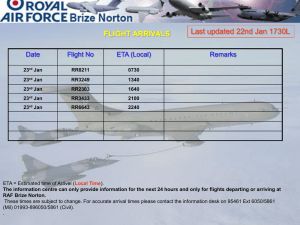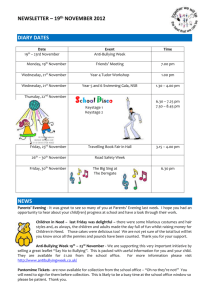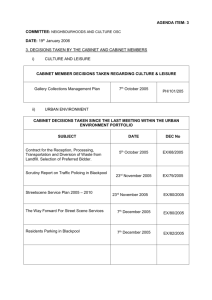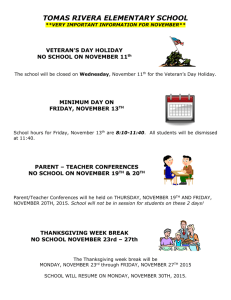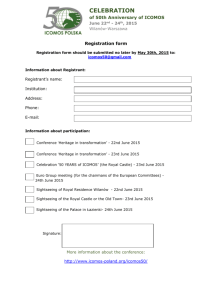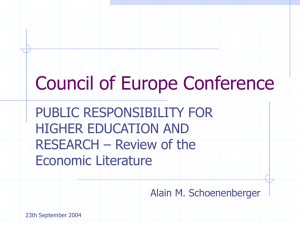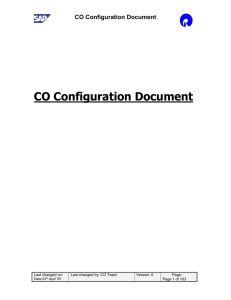Getting personal - The future of communications
advertisement
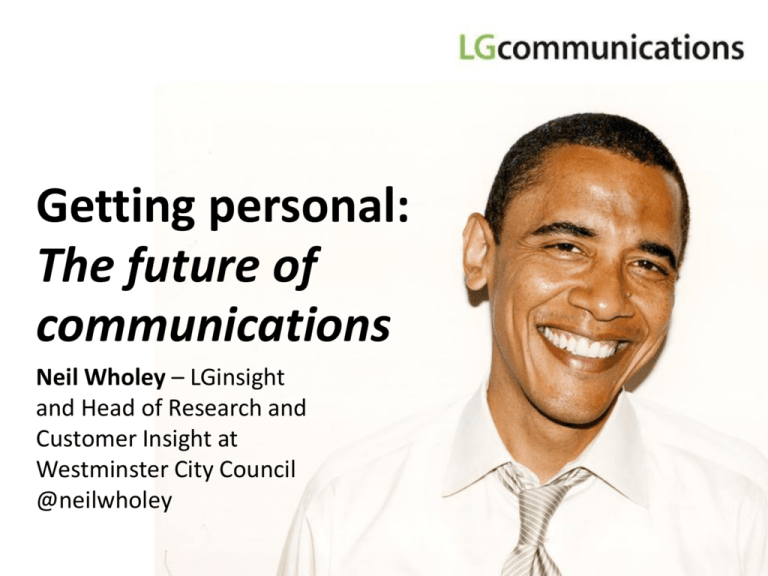
Getting personal: The future of communications @neilwholey Getting personal: The future of communications Neil Wholey – LGinsight and Head of Research and Customer Insight at Westminster City Council @neilwholey 23rd May 2013 Getting personal: The future of communications @neilwholey 23rd May 2013 Accuracy of opinion polls http://thefutureplace.type pad.com/the_future_plac e/2010/07/the-1936-uspresidential-electionthings-all-researchersshould-know-1.html •1936 Presidential Election candidate Alf Landon • Literary Digest magazine predicted in their poll that he would would win 57% of the vote against FDR • Sent out 10 million postal „ballots‟ and received over 2 million replies “Any sane person cannot escape the implication of such a gigantic sampling” • The sample of 10 million was biased towards the wealthy; Literary Digest subscribers, owners of cars and telephones • George Gallup used a carefully selected sample of 50,000 voters and predicted the election to within 1% of the final result and many of his techniques still underpin modern polling Getting personal: The future of communications @neilwholey 23rd May 2013 Times change “As Americans’ modes of communication change, the techniques that produce the most accurate polls seems to be changing... a number of polling firms that conduct their surveys online had strong results. Some telephone polls also performed well. But others, especially those that called only landlines or took other methodological shortcuts, performed poorly and showed a more Republican-leaning electorate than the one that actually turned out.... ...one-third of Americans who rely exclusively on cellphones tend to be younger, more urban, worse off financially and more likely to be black or Hispanic than the broader group of voters, all characteristics that correlate with Democratic voting..... The final poll conducted by Google Consumer Surveys had Mr. Obama ahead in the national popular vote by 2.3 percentage points – very close to his actual margin, which was 2.6 percentage points based on ballots counted through Saturday morning.....perhaps it won’t be long before Google, not Gallup, is the most trusted name in polling.” http://fivethirtyeight.blogs.nytimes.com/2012/11/10/which-polls-fared-best-and-worst-in-the-2012-presidential-race/ Getting personal: The future of communications @neilwholey 23rd May 2013 NYTimes: Accuracy of opinion polls http://fivethirtyeight.blogs.nytimes.com/2012/11/10/which-polls-fared-best-and-worst-in-the-2012-presidential-race/ Getting personal: The future of communications @neilwholey 23rd May 2013 Time Magazine, 7 November 2012: http://swampland.time.com/2012/11/07/inside-the-secret-world-of-quants-and-datacrunchers-who-helped-obama-win/ Getting personal: The future of communications @neilwholey 23rd May 2013 So what did they do? • Outcome • helped Obama raise $1 billion • remade the process of targeting TV ads • created detailed models of swing-state voters to increase effectiveness of everything from phone calls and door knocks to direct mailings and social media • Tools • One big database • Own data + bought in commercial data + web/social media tracking • Data-mining experiments to predict the degree to which individuals could be persuaded (and what would persuade them) • Dozens of metric-driven e-mail campaigns each day Getting personal: The future of communications @neilwholey 23rd May 2013 Many of the e-mails sent to supporters were just tests, with different subject lines, senders and messages. Inside the campaign, there were office pools on which combination would raise the most money, and often the pools got it wrong. Michelle Obama‟s e-mails performed best in the spring, and at times, campaign boss Messina performed better than Vice President Joe Biden. In many cases, the top performers raised 10 times as much money for the campaign as the underperformers. http://swampland.time.com/2012/11/07/inside-the-secret-world-of-quants-and-datacrunchers-who-helped-obama-win/#ixzz2DRNTVPmb Getting personal: The future of communications @neilwholey 23rd May 2013 It‟s another sign that the role of the campaign pros in Washington who make decisions on hunches and experience is rapidly dwindling, being replaced by the work of quants and computer coders who can crack massive data sets for insight. As one official put it, the time of “guys sitting in a back room smoking cigars, saying „We always buy 60 Minutes‟” is over. In politics, the era of big data has arrived. http://swampland.time.com/2012/11/07/inside-the-secret-world-of-quants-anddata-crunchers-who-helped-obama-win/#ixzz2DRNqHuh8 Getting personal: The future of communications 23rd May 2013 @neilwholey Best way to reach people? Q. Thinking about the ways which the council can give you information, which do you think are the best ways to reach you personally? 52% Email 47% Personal letter Council publication/magazines 35% Council websites 26% T.V. 16% Local newspapers 15% Social media National newspapers 12% 9% Source: 500 Westminster residents 16+ interviewed by telephone March 2012 by telephone Getting personal: The future of communications @neilwholey 23rd May 2013 This session is therefore about... • Is “getting personal” the future of communications? What should I be doing as a comms professional to up my game? What trends should I be aware of? • How technically can we engage more with our public – what are the tools we should be considering? This isn‟t just about Big Data there is more going on • Not so much about social media as I‟m far more excited by the role of email, other communication channels, hyperlocal media – and how to co-ordinate activity. It plays a role but isn‟t everything. If you don‟t agree you can berate me over lunch or on Twitter @neilwholey
